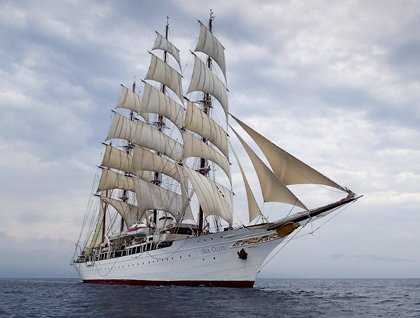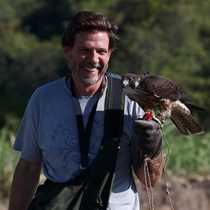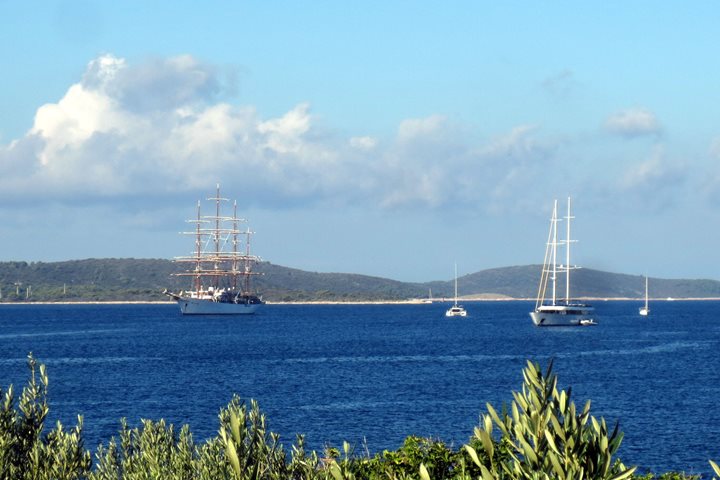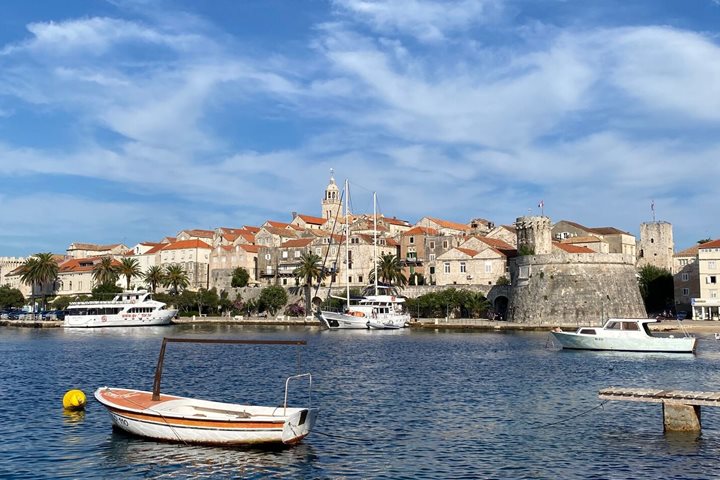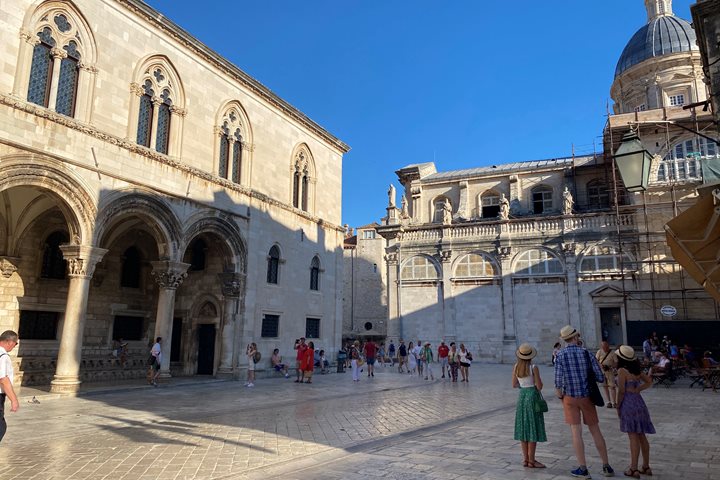After a nice morning sailing with the Sea Cloud sails in full blast and us taking photos of this beauty from the Zodiacs, we arrived in Ithaca, the second smallest island in the Ionian Sea and home to Odysseus, the wily king and “man of many devices!” As we dropped anchor, we saw the elegant yacht of the British government with Tony Blair as it was leaving! No surprise there: Ithaca is small and rugged, and one of the best-kept secrets of our Greek islands, with a long maritime tradition, and nowadays frequented a lot by the international jet-set. We tendered ashore where the statue of Odysseus was awaiting to welcome us at Vathy, the main port and capital, a nice small quiet town, one of the most concealed and protected natural bays of Greece - in the old days hiding from the pirates but nowadays only from the strong winds.
We drove with our buses in the windy roads of the northern part of Ithaca and mountain Neritos. The landscape was green, full of low vegetation but also pines, olives and cypress. We drove past the beach where Odysseus landed after twenty years away from home, for ten years fighting in Troy and another ten wandering in the seas - or the arms of various women… We made it up to the Monastery of Kathara, founded in 1696. The view from the elevation of 1800 ft. down to the south and the bay of Vathy was spectacular! Lord Byron had also visited the precincts, and Aristotle Onassis with Maria Callas contributed to restoration after the disastrous earthquake of 1953. We saw the miraculous icon of the birth of the Virgin Mary in the main church that was loaded with votive offerings in the form of jewelry or silver and bronze plates with representations of objects, body parts or people for whose health the dedications were made, chandeliers, candle holders or small silver ships hanging all over the ceiling.
Our picturesque drive continued through the village of Anogi and its lovely 12th century Orthodox church. A few minutes later we reached Stavros, the second largest town on the island with 250 inhabitants. We stopped in the central plateia, i.e. square with the main church, the Greek kafeneia (cafes), a map of Odysseus’ journey and a bust of the king himself! Stavros is very close to the ruins of what some archaeologists believe are the remains of Odysseus’ Palace, in other words a Mycenaean 13th century B.C.E. palace complex.
After enjoying our Greek frappe ice coffee, local sweets (ravani, baklava and kantaifi) and gelato, we drove back to Vathy, always following the spectacular road on the steep slopes of the mountain and enjoying views to the neighboring island of Cephalonia, the island of Captain Corelli’s Mandolin. Many chose to explore the town of Vathy for the evening as it came to life with children and the Greeks going out after the heat of the day!

